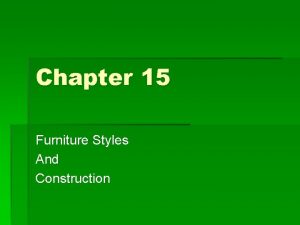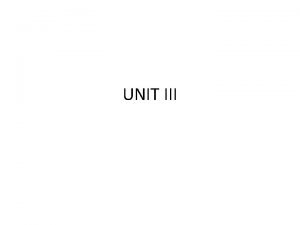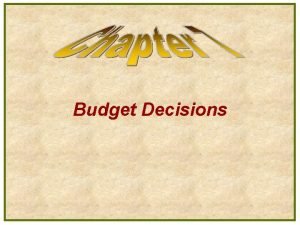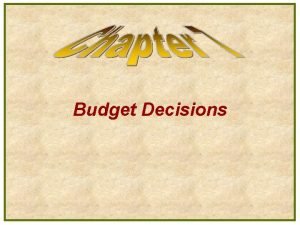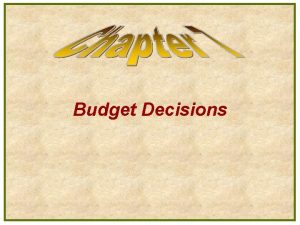Chapter4 Key construction Decisions Key Construction Decisions 4







- Slides: 7

Chapter-4 Key construction Decisions

Key Construction Decisions • 4. 1 Choice of Programming Language • • • • Ada Assembly Language C C++ C# Cobol Fortran Java. Script Perl PHP Python SQL Visual Basic


PROGRAMMING "IN" A LANGUAGE VS PROGRAMMING "INTO" A LANGUAGE • Programmers who program “in” a language program “into” a limit their thoughts to language first decide what constructs that the thoughts they want to language directly supports. express, and then they If the language tools are determine how to express primitive, the those thoughts using the programmer’s thoughts tools provided by their will also be primitive. specific language.

• Programmers who program “in” a language understand that language’s conventions and idioms. They write code which integrates well with other libraries, and which can be easily understood and maintained by other developers who are familiar with the language. They benefit from tools which have been specifically designed to aid coding in the supported idioms. • Programmers who program “into” a language will use the same ideas regardless of their target language. If their style does not mesh well with the language, they will find themselves fighting against it every step of the way. It will be harder to find libraries supporting their way of working, and tools may well prove annoying. Other developers who come onto the project later and who have experience in the language but not the codebase will find it hard to navigate and may well accidentally break the code when changing it.

Selection of Major Construction Practices • The following checklist summarizes the specific practices you should consciously decide to include or exclude during construction. Coding: • Have you defined coding conventions for names, comments, and formatting? • Have you defined specific coding practices that are implied by the architecture, such as how error conditions will be handled, how security will be addressed, and so on? • Have you identified your location on the technology wave and adjusted your approach to match? If necessary, have you identified how you will program into the language rather than being limited by programming in it? Teamwork • Have you defined an integration procedure, that is, have you defined the specific steps a programmer must go through before checking code into the master sources? • Will programmers program in pairs, or individually, or some combination of the two?

Quality Assurance • Will programmers write test cases for their code before writing the code itself? • Will programmers write unit tests for their code regardless of whether they write them first or last? • Will programmers step through their code in the debugger before they check it in? • Will programmers integration-test their code before they check it in? • Will programmers review or inspect each others’ code? Tools • • Have you selected a revision control tool? Have you selected a language and language version or compiler version? Have you decided whether to allow use of non-standard language features? Have you identified and acquired other tools you’ll be using-editor, refactoring tool, debugger, test framework, syntax checker, and so on?





